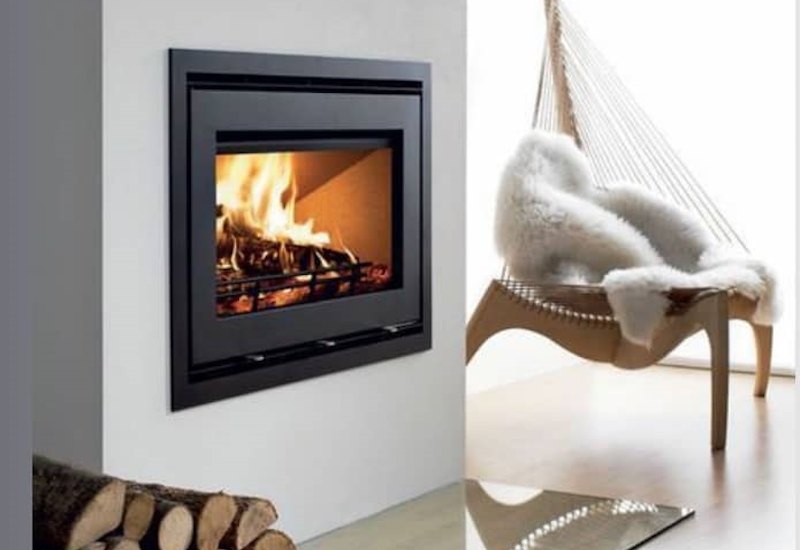 May
19
May
19
How To Use A Wood Fireplace
- May 19, 2022
- 0 Comment(s)
Your JETMASTER fireplace is designed not to smoke and by following a few instructions you will achieve optimum heat output, convenience and fuel economy.
Please note that the first fire could result in a few odours coming from the firebox. Do not be alarmed. This is not unusual when first using a metal finished product and will soon cease.
LIGHTING A FIRE
Using a number of crumpled sheets of newspaper, some kindling and a few small split logs arrange your fire in a “Teepee tent” style.
With the tool provided, fully open the DAMPER by pulling the control lever towards you, (Not always applicable with the Double-sided firebox).
Light the fire at both ends as well as at the centre.
When the kindling and small split logs are burning well, start to build up your fire with larger split logs.
When the fire is well established you can start closing the Damper. The amount you can close it will depend on the type of wood used and the general weather conditions. Experience will soon show how far; however, the damper should never be closed more than halfway.
When the fire has gone out completely, you can close the Damper fully thus preventing any loss of heat from the room up the chimney.
CLEANING
The Jetmaster Log Pan is designed to give greater heat and fuel efficiency. For the duration of the cold season the Log Pan should never be emptied. The resulting bed of ash and coals from previous fires will soon become a heat bank generating more heat than the burning logs; this ash bed is also insulated and greatly extends the life of the Log Pan. This is why an ash bed must be maintained at all times.
When the level of the ash bed becomes too high, the top layer can be removed. Depending on the frequency of use and quality of wood, this skimming procedure should not be required more than once or twice a season.
To prevent chimney fires as well as enabling the chimney to dray properly, the chimney/flue should be swept at least once a season, subject to the quality of timber used in the fire.
General Maintenance
The visible parts of your Jetmaster can be cleaned with a damp cloth or soft brush. Should you wish you could repaint the unit with a heat-resistant paint.
Safety
The Jetmaster is a safety-tested unit. However, you must never leave an open fire unguarded. Jetmaster has a screen that is designed to prevent sparks leaving the fireplace and very resistant to being knocked over by young children.
Do not use flammable liquids or aerosols to start or rekindle the fire or place these in the vicinity of this appliance when it is operating.
Do not store fuel within the heater’s installation clearances.
The use of some types of preservative-treated woods can cause hazardous burning conditions.
This appliance is a heating appliance and hot surfaces can be expected. It is recommended that a secondary barrier or shield be used to prevent small children from making accidental contact with the unit.
Heat is radiated from the front of the fireplace. It is therefore important to take special care that no combustible material is placed close to the opening of the fireplace. No combustible materials, e.g. wooden furniture, cupboards and fittings should be placed within 700mm from the front of the fireplace.
Fuels
The type and size of wood used will play a big role in the performance of this fireplace. It is important to note that the amount of heat conveyed to the room is determined by the wood burned. A small fire can only heat a small area.
Medium density woods are preferred for open fireplaces. Softer woods (pine, etc.), will give off larger, hotter flames, burn fast, leaving less coals, a lot of ash and creosote.
Hard woods will give off slower, cooler flames, burning much longer, while leaving more coals. Hardwoods can be mixed with medium woods and should not be used to start a fire.
A split log will burn better than a full log.
Wood should be stored (seasoned) in a dry ventilated area for at least 12 months. “Green” (freshly cut) wood can have 50% moisture. Heat from the fire has to drive this off as steam before the wood can burn effectively, which results in very poor heat emission. This heat is lost in the formation of steam. Burning wet wood will also limit the effectiveness of the combustion process and might lead to excessive formation of soot in the unit and the flue pipe.
NOTE: Excessive soot build-up can lead to a chimney fire (fire burning throughout the length of the flue). This should be avoided.
Burning well-seasoned medium density wood is the most important step towards achieving optimum results from your JETMASTER!
Logs with smaller diameters, or split logs will burn more effectively and more efficiently.
NOTE: Avoid the use of treated woods. This can cause uncontrolled flames, overheating or even deposits that could damage the unit.
Ventilation
To maintain a fire, fresh air (oxygen) is required. All burned air will exit the room through the flue pipe. It is important to allow adequate fresh air to enter the room, in order to replenish the air supply.
An inadequate air supply (air starvation) could cause smoke to escape into the room.
Air starvation can also be caused by mechanical appliances such as kitchen extraction systems and some types of air conditioners.
